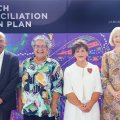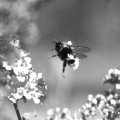Public funds and donations are needed for a Queensland bank with a difference - its withdrawals pay dividends for burns victims.
The Skin Bank, due to be opened later this year, will store skin donations and grow (in culture) burns victims' own skin.
A Queensland-based Skin Bank will be a great advance, according to the director of the RBH and Royal Children's Hospital Burns Units and University of Queensland Surgery Department Professor Stuart Pegg.
At present, skin for people with severe burns (such as Tjandamurra O'Shane) must be flown in from laboratories either in Melbourne or Auckland. Queensland did have its own skin bank but the facility closed several years ago due to a change in government regulations.
Professor Pegg said the technique of growing a patient's own skin in culture involved removing a small portion of skin (about the size of two 50-cent pieces) from a patient. The portion was treated with enzymes and cultured into sheets of skin. Within 14 to 21 days, one square metre of skin could be grown.
Deputy director of the RBH and Royal Children's Hospital Burns Units and University of Queensland clinical senior lecturer Dr Michael Muller said the bank would also provide a site for vital research into new skin grafting techniques. For example, there was an ongoing search for a good collagen base or dermis on which to culture skin cells.
He said a Western Australian researcher Dr Fiona Wood had already developed a technique whereby suspended skin cell cultures were sprayed directly on to the burnt area rather than grown into sheets.
The Skin Bank will consist of around 280 trays stored in liquid nitrogen at minus 70 degrees Celsius. Each tray can hold one to two pieces of skin measuring around 200 square centimetres. The average adult has about 3.5 square metres of skin.
Professor Pegg said coverage with either donor skin or substitute skin was the crucial first step when burns patients arrived at operating theatres. This was vital to prevent infection, the primary cause of death in burns victims, he said.
'These are used as temporary dressings and are removed several weeks later. By this time, we hope to have cultured and grown a piece of the patient's unburnt skin for use as a permanent skin graft. The timing of this stage depends on the severity of the burn. Pressure garments (bandaging) are then applied to prevent scars raising and accelerate healing,' he said.
Professor Pegg said the RBH Burns Units treated about 300 adult and 340 child burns cases each year. Of these, 250 adults and 100 children required skin grafts, he said.
Further funds were needed to establish the Skin Bank and once set up, donations of skin would be welcomed, he said.
For more information, contact Professor Pegg (telephone 07 3253 8346 or 07 3253 1621) or Dr Muller (telephone 07 3252 8314, 3253 1621 or 07 3253 7586).



